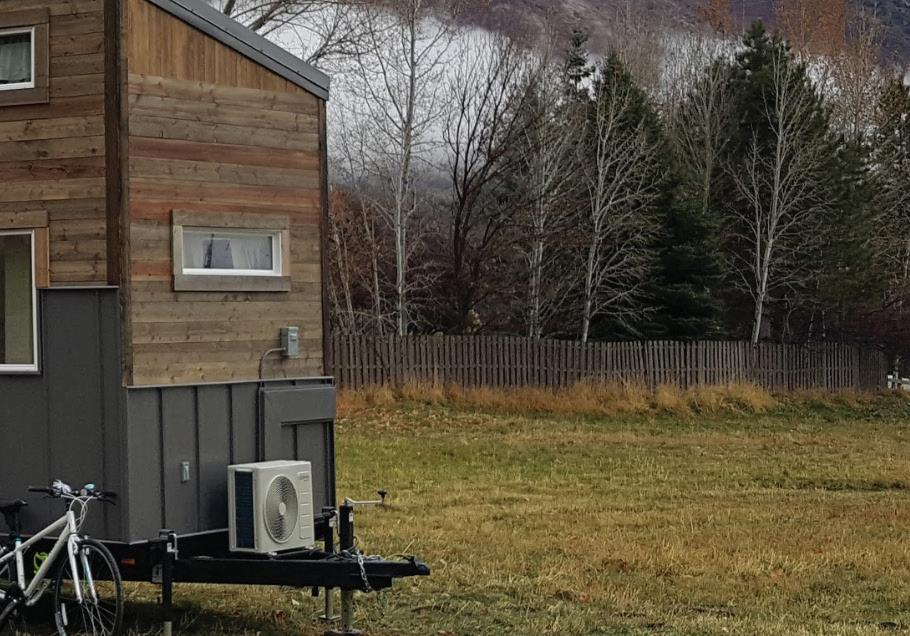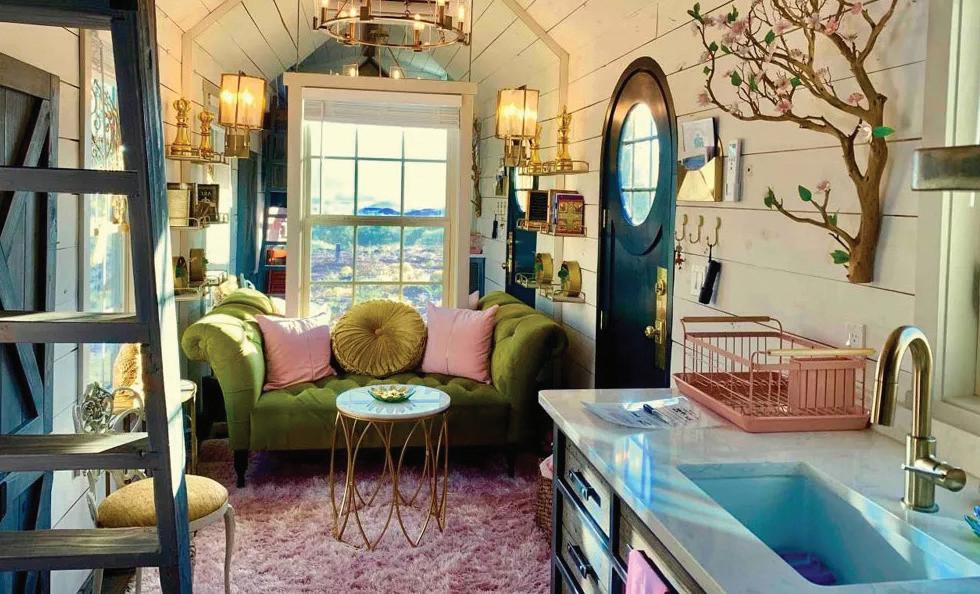
5 minute read
Tiny Homes Solution
Tiny Houses May Be The Solution To A Big Problem In SLC
Mayor touts tiny home project
Advertisement
By David E. Jensen
Tiny homes to the rescue!
Salt Lake City, like most metropolitan areas, has an affordable housing crisis along with a growing homeless crisis, and tiny houses may be the solution. Mayor Erin Mendenhall has plans to “make measurable progress on a tiny home pilot project by facilitating at least six work
sessions with community partners and using the findings to chart a path forward to have tiny homes in place by winter 2021-22.” The Mayor envisions a peer-based village of 400 tiny houses that could accommodate the chronically homeless, although it’s not clear who would build the tiny homes, what they would cost, whether they would be permanent or mobile, or whether they would be sold, rented, or made available based on need. Due to Utah’s record growth since 2010, Salt Lake’s housing market is grossly out of balance. In March of this year, the price of a single-family home in Salt Lake County was up 31.1 percent over last year, with an average price of $405,000, and rents have increased 78% over the past five years, more than doubling median income in the same period. Tiny homes offer simplified home ownership without shackling owners to a 30-year mortgage and the maintenance and expense of a traditional home. Most conventional homeowners pay between one-third and one-half of their income to a mortgage company, and three fourths of Americans are mired in debt, making the dream of home ownership nearly impossible. Allowing tiny homes in suburban areas could change that. Elsewhere across the country, shipping crate dwellings are being utilized as an affordable solution to the current homeless crisis, and many jurisdictions are beginning to see the effectiveness of tiny homes as a way to curb homelessness and urban sprawl.

Can I build my own tiny home?
The tiny house craze swept the country around 2008 during the slumping housing market. TV shows like Tiny House Nation piqued viewers’ curiosity and made tiny houses an appealing alternative to suburban blight, excessive consumption, and the accelerating depletion of natural
resources. But are tiny houses a passing fad or the solution to a growing problem? Considering the skyrocketing price of homes these days, people want tiny houses more than ever because they’re affordable. But what is the definition of a tiny house, and how tiny is too tiny? The average American home has 2,600 square feet of living space, whereas most tiny houses have between 100 and 400 square feet. Many of them are on wheels while others are set on a permanent foundation. The real estate boom is widening the gap between rich and poor and shrinking the middle class. Tiny homes could increase density on traditional lots from one family to four or five, and decrease overall mortgage costs by more than four-fold. Ryan Mitchell, author of The Tiny Life says, “A tiny home is easier to maintain because the average tiny home size is significantly smaller. Imagine the time you’ll save keeping up with the average tiny home square footage (just 186 square feet). The average “regular-sized” home in the U.S. is over 11 times larger! That’s much more time spent on upkeep.” You can design and build your own tiny house, build one from a kit, use a trailer chassis, transform an old shipping container, or buy one pre-built, and you can do it for a fraction of the cost of a conventional home. You can even buy a tiny home on Amazon.

Where can I build it?
You’ll need a place to build or park your tiny home, and that can be a problem in most cities, where zoning laws prohibit tiny houses. According to the city’s website, “Salt Lake City does not have special regulations regarding tiny homes. Construction of homes of any size are required to meet the rules and regulations of the zoning district in which they are located. Salt Lake City does not allow homes without a permanent foundation … Any movable structure with wheels is considered a recreational vehicle. The City does not allow recreational vehicles to be used as living space.”
In most places, zoning laws prohibit tiny homes except as Accessory Dwelling Units or ADUs. Currently, Salt Lake City ordinances allow homes under 400 square feet to be placed on a residential lot with an existing full-size home, as long as the tiny home is on a foundation and meets basic sanitation requirements. The Salt Lake Tribune says, “[Salt Lake City’s] new approach would halve square footages per dwelling in many cases, reduce minimum lot width requirements and make other tweaks aimed at allowing for more units on the same parcel, including tiny homes at 400 square feet or less. Those homes could be built on 1,500 square feet instead of 5,000, under the new rules.” Furthermore, “The ordinance tweaks would also introduce a lot width maximum in hopes of preventing land owners from amassing several lots for larger developments of more than three units. The proposal also gives owners a density advantage for homes already built on the parcels, to discourage their demolition.” Doug Larson of Riverton, Utah, is an authority on tiny homes and mini-cabins. Larson is the author of Home Sweet Tiny House (available on Amazon and Kindle). Using Larson’s plans, you can build your own tiny house, backyard art studio, writer’s retreat, she shed, man cave or mini cabin for around $4,000 by starting with a pre-built garden shed from Home Depot or Lowe’s, although most fully-equipped tiny homes that meet code and zoning requirements will fall in the $50,000 to $60,000 range. “Before you install it,” Larson says, “you will definitely want to find out what your city and neighborhood will allow.”











